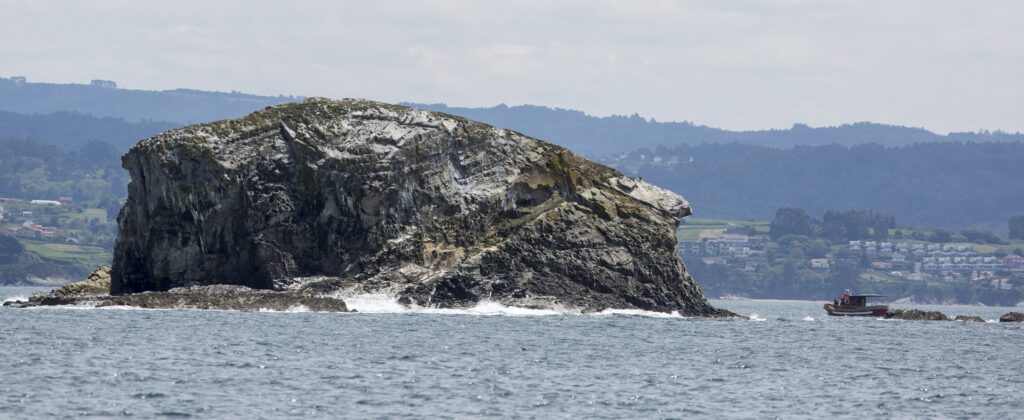Ares Coopera – The History of Ares is told by its Coastline

The sea’s pathways tell the true story of the land
The Ares coast is full of enclaves that tell its story and its connection to the sea. It all begins in the estuary that bathes the lands, and opens from Punta Coitelada (Ares) to Seixo Branco (Oleiros). If you walk along the coast, you can fully immerse yourself in its history, from pre-Roman times to the Modern Age.
The union of the ocean and the land gives continuity to a flat territory, which is interrupted however in Montefaro, with an altitude exceeding 265 metres in Pena Bailadora. This was once a strategic military area where the defensive structure can still be appreciated. However, it offers much more: this area boasts one of the best viewpoints from which the imposing Ferrol estuary, the second deepest of the Galician estuaries, can be seen. Here, you can also find the Monastery of Santa Catalina, founded in the 14th century by Fernán Pérez de Andrade, “El Bueno”.
A few kilometres away is Punta do Segaño. This geographical point was yet another strategic defensive point on the Ártabra coast, where military batteries, still in good condition, can be found. If we continue south, we arrive at Punta Coitelada, where the majestic shapes of the coastal granite landscape stands out. The Chanteiro sandbank is located between these two points.
The Ares coast is under environmental protection; ZEC Costa Ártabra, Special Conservation Area of the Natura 2000 Network. In addition, both Palma Castle (Cervás) and the Santa Catalina Monastery (Montefaro) form part of the Assets of Cultural Interest (BIC) Registry. This highlights the important value of the territory.
Did you know that…
…the Ares coast is bathed in mystical legends? One such legend tells of a mermaid who lived on the Miranda Islands and observed humans from a hiding place. One day a rich Nobleman fell in love with her. They married and went to live inland. Far from the sea, her scales transformed into legs and thus, they were able to have children. It is said that this is how the “Mariño” lineage, a popular Galician surname, began.
Sea legends also take us to Cova dos Mouros, the Mouros Cave, a place full of stories that speak of the existence of an untouchable treasure inside, and where the drums of the Mouros* beat at night as they celebrate their riches. Legend has it that the passageway crosses the underground territory to the neighbouring Ferrol estuary, although no one can confirm this.
Mouros: characters from Galician mythology who are said to have lived in tunnels and lairs underground as they searched for gold, although there are several other theories about their origin.
Discover the coastline
To explore some of the enclaves of Ares, you can enjoy coastal and maritime routes proposed throughout the year by the City Council. Check out all the possibilities at your Tourist Information Office or visit their website!
- Oficina de Información Turística de Ares
Av. de Redes, 7
